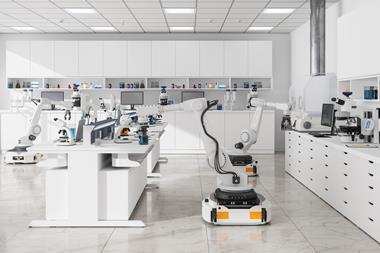The recent acquisition of Quorn by Premier Foods rekindles memories of one of the most audacious cases of industrial espionage.
The recent acquisition of Quorn, the factory-made protein, by Premier Foods rekindles memories of one of the most audacious cases of industrial espionage ever to come to light. Long before word was out that Quorn was a major innovation in food science, a Soviet scientist visiting the High Wycombe laboratories of Rank Hovis McDougall (RHM), asked if he might see the organism they were fermenting. It seemed a harmless request. They handed him a stoppered bottle labelled with a number. The visitor raised the stopper, inhaled deeply of the powdery organism, then blew his nose into a clean handkerchief and tucked it away - to the consternation of his hosts.
The bakers discovered the organism by chance. They sold low-calorie bread rolls called Energen from which they scooped the starch to leave little more than a golden brown crust. They dumped the unwanted starch on fields in Kent. Someone noticed how effectively nature was dealing with the effluent - a natural organism was converting it to mycoprotein, related to mushrooms and truffles. RHM scientists, led by Arnold Spicer, set to work laying the foundations for the new foodstuff.
Then began the long, costly haul to bring a genuinely novel food to the market. As product champion, Spicer persuaded the government to share the cost of a £1 million pilot fermentation plant. In 1970 they went public with a visit to the laboratories by the Queen Mother.
But it proved a great disappointment. Succulent chunks of RHM’s new ’meat’ in a curry simply collapsed to a mush in the mouth. They played safe with their royal guest and fed her a pâté. It still needed much research to knit the fibrous micro-fungus into a facsimile of muscle.
In the mid-1970s a shipboard meeting on lake Geneva wrought a profound change in mycoprotein’s fortunes. Jack Edelman, now RHM’s research director, met an ICI director, engineer Rob Margetts. They discussed a joint venture that would bring together RHM’s skills in food technology with ICI’s experience of large-scale continuous fermentation. The upshot was Marlow Foods which in 1986 began commercial-scale manufacture of a product called Quorn - a name picked for its countryside associations. Quorn emerged as large yellow sheets from a lofty fermenter at Billingham and was cold stored nearby until ready to be turned into facsimiles of meats, poultry or fish.
In 1980 the company won government approval to market mycoprotein from the then Ministry of Agriculture, Fisheries and Food. RHM had submitted a two-million word dossier on nutritional and toxicity tests. As a prospective human food it had to be treated quite differently from a food additive, where it was customary to feed 100 times the normal amount to animals and watch for aberrations. To test what was seen as a potential staple food, animals must live exclusively on a diet where mycoprotein was the only protein.
Eleven species of animal were engaged in the tests: from rodents to pigs, cows and baboons, in some cases for four generations.
Then began the clinical trials, including one on students in the US, conducted by nutritionists with Massachusetts Institute of Technology. Another was at a college in High Wycombe, near RHM’s labs, where students regularly ate a cooked lunch based on mycoprotein.
Not least of mycoprotein’s commercial attractions is high process efficiency. It takes only 2-3kg of carbohydrate to make 1kg of mycoprotein, whereas a cow needs 11kg when one takes full account of the carcass and other wastes. It’s low in both fat and cholesterol.
Quorn, although a biotech product, sat uneasily in the pharma environment of AstraZeneca, and was hived off in a management buyout in 2003. Premier Foods has now bought it for £172 million. Its UK products - 75 per cent of a market that’s been growing at 7-8 per cent a year - include sausages and cottage pie.












No comments yet